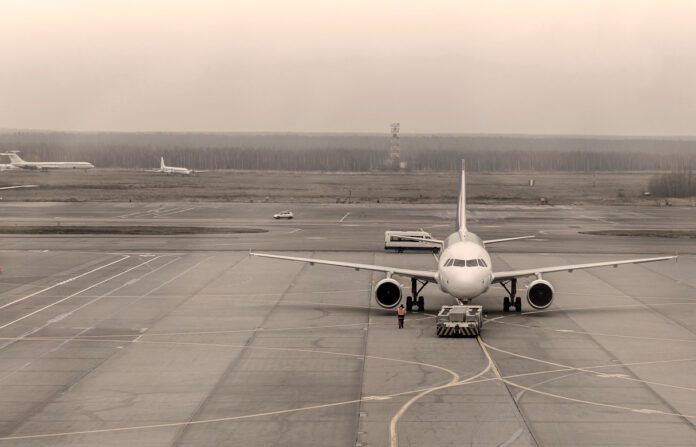The FAA has published a Safety Alert for Operators (SAFO) aimed at preventing injuries to ground personnel towing and guiding airliners. The agency recommended that operators ensure their towing and marshalling procedures require that chocks are installed whenever aircraft towing stops, all personnel to remain clear of an aircraft in tow until it has come to a complete stop, ground activities begin only after chocks are installed and all personnel remain clear of engines until they are shut down. According to the FAA, the SAFO (PDF) stems from two events that occurred during aircraft towing and ground handling operations.
In one incident, a wing walker was seriously injured when they were struck by the trailing edge flaps of an aircraft being towed and subsequently run over by the main landing gear. During the second reported event, a ramp agent was killed when they were ingested by a running engine. The FAA emphasized that it has not seen proof of a systemic issue but issued the SAFO due to the severity of the incidents.



































Advice that seems to be along the same lines as ‘caution, contents may be hot’ on a coffee cup.
Sort of, but not really. A ramp is a dynamic environment, so the “contents” that is “hot” is constantly moving. And since it’s a noisy environment, it might not be obvious without checking that the aircraft engines have been shut down.
Anyone that had worked in an aircraft maintenance shop (including doing owner-assist maintenance) will know that even when you know you’re around airplanes, you’re probably going to bang your head on a prop or aircraft part. And that’s when they aren’t moving or have their engines running.
I understand that. But it’s also not ‘Joe Public’ wandering around on the ramp. These are (supposedly) trained personnel with procedures to follow. The accidents I have heard of lately appear to be these personnel not following procedure or training.
Sometime obvious isn’t to everyone. Like how I was introduced to a reason why you shouldn’t use the wing of an acft being towed to stay dry.
As a young duty officer, a sailor came running to the duty desk about a “gear collapse” on a Prowler being towed. Ran down and sure enough there it sat on its right wingtip. Wing walker was a bit shook up, but fortunately a rare day it wasn’t raining in the NW, so she wasn’t walking under it.
Turns out the gear was fine, it just happened to roll over a street-rated manhole cover the public works knuckleheads placed there instead of one meant for the ramp…which failed when the single wheel main punched thru. Fire Dept had a harder time removing said main from manhole.
The Prowler? after being freed up, it went up on jacks, was checked over and paint was touched up. Grumman Iron Works.
Many years ago in the UK, a towing team were moving a DH Comet on an ice covered ramp.
As the tug slowed down at the destination a crew member approached a main undercarriage bogie, he was carrying a 3′ long chock, he slipped on the ice and was run over by the bogie. Sadly he died later.
While the FAA directed the safety alert to the airlines, a large amount of the ground personel are supplied by contractors. I hope they get the right training for this.